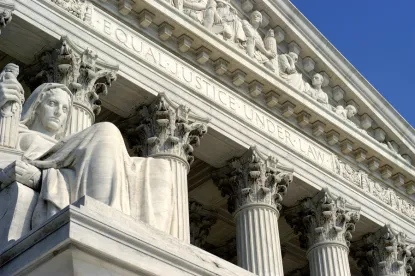The United States Supreme Court resolved a split among appellate circuits about when an employee must take action to pursue a constructive discharge claim. The Court held that the 45-day limitation period for a federal civil servant to contact an EEOC counselor for a constructive discharge claim under Title VII of the Civil Rights Act of 1964 begins to run when the employee gives notice of his resignation, and not on the date of the employer’s last alleged discriminatory act. The Court’s decision in Green v. Brennan foreshadows how courts will likely treat the timeliness of filing constructive discharge claims in both the private and public sectors.
The Facts
Marvin Green worked for the U.S. Postal Service for 35 years. The last position he held was as postmaster for a Denver, Colorado suburb. He applied for a promotion for a vacant postmaster job in Boulder, but he was passed over. Shortly thereafter, Green complained that he was denied the promotion because of his race. His supervisors accused him of intentionally delaying the mail – a criminal act – and continually threatened Green. Finally, Green and the Postal Service signed an agreement wherein the Postal Service promised not to pursue criminal charges in exchange for Green’s promise to resign, retire, or take a position in Wamsutter, Wyoming (population 451) for significantly less pay. Green chose to resign. Forty-one days after he submitted his resignation paperwork, which was 96 days after he signed the settlement agreement, Green contacted an EEOC counselor to report an unlawful constructive discharge.
Before a federal employee can sue his employer for violating Title VII, he must contact an EEOC counselor “within 45 days of the date of the matter alleged to be discriminatory.” The U.S. 10th Circuit Court of Appeals held that the “matter alleged to be discriminatory” encompassed only the Postal Service’s discriminatory actions and not Green’s decision to resign; therefore, the 45-day period started running when the parties signed the settlement agreement and Green’s EEOC contact was untimely.
The Holding
The Supreme Court reversed, holding that the “matter alleged to be discriminatory” includes the employees’ resignation so that the 45-day clock for constructive discharge begins running only after the employee resigns. The Court specifically noted that the 45-day regulation, though applicable to federal employees only, “has a statutory analog for private-sector Title VII plaintiffs, who are required to file a charge with the EEOC within 180 or 300 days after the alleged unlawful employment practice occurred…Although the language is different, the EEOC treats the federal and private-sector employee limitations periods as identical in operation.” Notice of the resignation, and not the resignation itself, triggers the limitations period to start running (i.e. “If an employee gives ‘two weeks’ notice…the limitations period begins to run on the day he tells his employer, not his last day at work”).
Based on the Supreme Court’s ruling, employers who pursue a statute of limitations defense of a constructive discharge claim must calculate the employee’s deadline to file an EEOC charge from the date the employee gives notice of his or her resignation, even if the last alleged discriminatory act occurred before the employee submits the notice.




 />i
/>i

